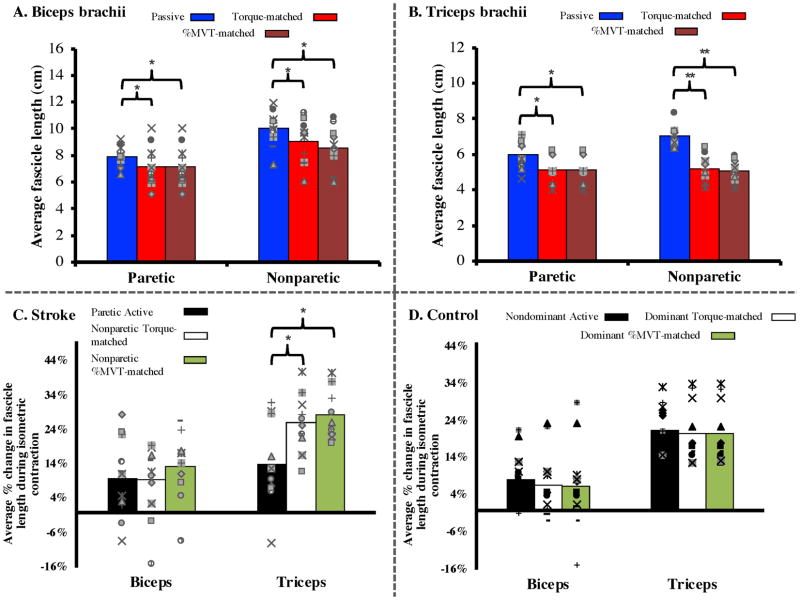Figure 5.
(Top) Average fascicle length during all three conditions (passive, torque-matched, and %MVT) for both limbs of N=11 (biceps) and N=10 (triceps) subjects in our study. For the paretic limb, the torque-matched and %MVT categories are identical and are repeated for ease of viewing. Across both muscles and both limbs, there was a significant decrease in fascicle length during an isometric contraction (p=.001 main effect of condition for biceps, p<.0005 simple main effect of condition for triceps). The difference in fascicle length between the paretic and nonparetic limbs seen in the passive condition (Figure 3) was also observed in the biceps brachii during an isometric contraction (p=.001 main effect of arm), but not in the triceps brachii (p=.619, .723 for simple main effect of arm for torque-matched and %MVT conditions, respectively). Individual subject data are again represented with separate markers, similar to Figure 3.
(Bottom) Average % decrease in fascicle length from the passive condition during an isometric contraction for N=11 and N=10 (biceps and triceps, respectively) subjects with chronic stroke and N=11 age-matched control subjects from a previous study (unpublished data). The % decrease in fascicle length during an isometric contraction did not significantly differ between limbs in either stroke or control subjects for the biceps brachii. However, although the % decrease in fascicle length in the control subjects was not significantly different between limbs or conditions for the triceps, there was a significant decrease in the amount of triceps fascicle length decrease seen during an isometric contraction in the paretic limb when compared to that in the nonparetic limb (p=.012 for torque-matched condition, p<.0005 for %MVT-matched condition).

